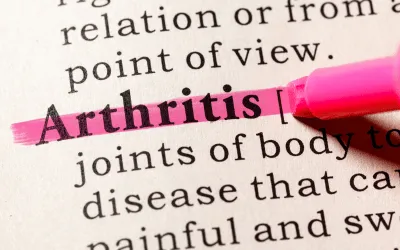About Arthritis
As the nation’s #1 cause of disability, arthritis affects nearly 60 million adults and 300,000 children. Over 100 types of arthritis and related conditions damage the joints and often other organs.
How can we assist you?
Helpful Tools for You

Understanding the Connection: Osteoarthritis and Heart Health
Did you know that osteoarthritis (OA) impacts more than just our joints? While the most recognized symptoms are joint pain and swelling, there's more to the story. Studies have highlighted that individuals with OA have a heightened risk of cardiovascular issues. In fact, those with OA are nearly three times more prone to encounter heart-related challenges, especially when the arthritis is located in significant joints like the knee or hip. But here's the silver lining: having OA doesn't prevent you from taking positive steps for your heart's well-being.
Exploring the Relationship Between OA and Heart Health: What's the Connection?
Did you know there's an interesting link between osteoarthritis (OA) and heart health? While OA hasn't always been linked to inflammation, new research suggests a connection. Prolonged inflammation can contribute to cardiovascular diseases (CVD).
As we age, our risk for both conditions increases. Our arteries naturally become thicker and less flexible, potentially leading to high blood pressure and strain on the heart. Similarly, our joints face wear and tear from years of use. Although we can't turn back the clock on aging, there are preventive measures to consider.
Staying active is essential not only for joint flexibility but also for heart health. Evidence indicates that those with OA who remain inactive are at a higher risk for heart-related issues. If joint pain hampers your movement, consider options like joint replacement to boost mobility and reduce heart disease risks.
Furthermore, maintaining a healthy weight is vital. Excess weight strains both your joints and heart. Moreover, fat cells release inflammatory agents that can harm joints, heart, and blood vessels.
It's worth noting that conditions like high blood pressure, high blood sugar, and abnormal cholesterol levels (often grouped under 'metabolic syndrome') can increase the risk of CVD. Surprisingly, around 60% of those with OA exhibit these conditions, compared to only 23% of the general population. This syndrome might even exacerbate joint issues.
Lastly, while NSAIDs like ibuprofen and naproxen are beneficial for OA pain relief, prolonged use might elevate the risk of CVD. Some studies even suggest that extensive use of these pain relievers can significantly increase heart-related risks. Always consult your doctor about the safest way to manage your pain.
How Can You Safeguard Your Heart Health?
Discuss with your doctor about the weight that's best suited for your height. If you notice you're a little over, a balanced diet and exercise can help you get on track.
Opt for joint-friendly exercises like swimming or cycling on a stationary bike. These activities help burn calories while being gentle on your joints.
Remember to regularly monitor your blood sugar, blood pressure, and cholesterol with your doctor's guidance. If these numbers aren't where they should be, a mix of a healthy diet, exercise, and perhaps medication can assist in balancing them.
When it comes to pain relief, it's wise to use NSAIDs judiciously. Take the minimal required dose for the briefest time needed. Also, consider natural pain relief methods such as applying ice or heat, or even a soothing massage.
If persistent pain is limiting your exercise routine, it might be time to chat with your doctor about the possibility of joint replacement surgery. It's always good to weigh the pros and cons before taking such a step
Effects of Arthritis

Cause of Disability
In the United States, 23% of all adults, or more than 54 million people, have arthritis. It is a leading cause of work disability, with annual costs for medical care and lost earnings of $303.5 billion.

Workforce Effects
Sixty percent of US adults with arthritis are of working age (18 to 64 years). Arthritis can limit the type of work they are able to do or keep them from working at all.

Global Impact
In fact, 8 million working-age adults report that their ability to work is limited because of their arthritis. For example, they may have a hard time climbing stairs or walking from a parking deck to their workplace.
Promoting Interventions That Reduce Arthritis Pain
American Arthritis Foundation recognizes several proven approaches to reduce arthritis symptoms:
Be active. Physical activity—such as walking, bicycling, and swimming—decreases arthritis pain and improves function, mood, and quality of life. Adults with arthritis should move more and sit less throughout the day. Getting at least 150 minutes of moderate-intensity physical activity each week is recommended.
Protect your joints. People can help prevent osteoarthritis by avoiding activities that are more likely to cause joint injuries.
Talk with a doctor. Recommendations from health care providers can motivate people to be physically active and join a self-management education program. Should your arthritis be interfering with your activities of daily living you may be a candidate to receive many new treatments, and learn how to reverse the arthritis condition.
Have a question?
We're Here to Help
By providing my phone number, I agree to receive text messages from the business.


